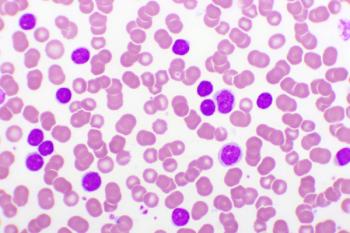
Sarilumab Shows Greater Improvements in QoL for Patients With RA and High Levels of IL-6
Compared with adalimumab, sarilumab elicited greater improvements in health-related quality of life (QoL), particularly in patients with high levels of interleukin-6 (IL-6).
Among patients with
The researchers conducted
On the heels of these study findings, the researchers compared the ability of the 2 treatments with impact on health-related quality of life (HRQoL) for 300 patients based on baseline levels of IL-6.
The impact of IL-6 has been well studied, with research not only implicating dysregulation of IL-6 in the development of RA but also establishing the impact of IL-6 on disease outcomes, with the interleukin being associated with joint inflammation, bone erosion, and nonarticular manifestations of the condition like anemia and type 2
Not surprisingly, data from the post hoc analysis showed that patients who had higher levels of IL-6 had worse patient-reported outcomes and HRQoL as measured by the Short Form 36 (SF-36) Health Survey Questionnaire physical/mental component summary and domain scores (ie, physical functioning, bodily pain, general health, social functioning, etc), Functional Assessment of Chronic Illness Therapy fatigue scale, and duration of morning stiffness visual analog scale.
In general, there were greater improvements in HRQoL—measured at baseline, 24 weeks, and 52 weeks—reported in patients receiving sarilumab, and these improvements were more pronounced among patients with high levels of IL-6 (range, 39.6-692.3 pg/mL). Although the improvements were less pronounced in patients receiving adalimumab, the treatment’s effect was consistent across all IL-6 levels (low, medium, and high).
“While our findings suggest that IL-6 levels may be associated with those scores where larger HRQoL improvements were reported, more work is needed to better understand these impacts of disease,” wrote the researchers. “For example, it would be pertinent to determine an optimal cut-off for IL-6 concentration, using receiver operating characteristic (ROC) analysis for improvement in patient-level responses, or machine learning methods like Classification and Regression Trees (CARTS).”
Looking at the differences between sarilumab vs adalimumab treatment in patients with low and high levels of IL-6, the researchers saw least square mean differences of:
- 5.57 vs 0.87, respectively, in SF-36’s physical component summary
- 3.19 vs 16.59 in the physical functioning domain
- 19.93 vs 1.21 for morning stiffness
According to the researchers, there seemed to be no difference in effect between patients with high or medium and low IL-6 levels in the SF-36 mental component summary.
Reference
Strand V, Boklage S, Kimura T, Joly F, Boyapati A, Msihid J. High levels of interleukin-6 in patients with rheumatoid arthritis are associated with greater improvements in health-related quality of life for sarilumab compared with adalimumab. Arthritis Res Ther. Published online October 20, 2020. doi:10.1186/s13075-020-02344-3
Newsletter
Stay ahead of policy, cost, and value—subscribe to AJMC for expert insights at the intersection of clinical care and health economics.









































